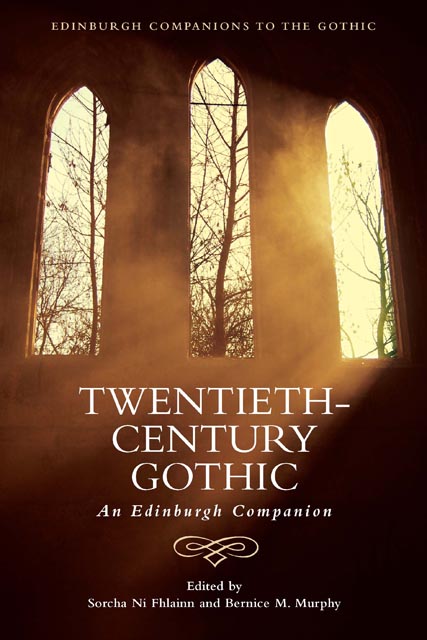6 - Grand-Guignol as Twentieth-Century Gothic Drama
Published online by Cambridge University Press: 18 November 2022
Summary
The malleability of the Gothic mode has meant that it has always been able to adapt itself to a variety of media. In particular, Gothic drama has been a highly successful way of delivering its narratives. First gaining prominence in the late eighteenth century, alongside the first wave of Gothic novels, these plays achieved long runs and huge audience numbers, as well as being on the cutting edge of developments in stagecraft and special effects. This situation changed in the early decades of the twentieth century: the never-ending stream of original play texts and adaptations of Gothic fiction dried up and, in the second half of the century, appeared to give way to the efforts of filmmakers and more commercial forms of performance such as spookshows and scare attractions. Between these two eras sits, perhaps uncomfortably, the Théâtre du Grand-Guignol, the French Theatre of Horror. Offering a selection of one-act plays, the Grand-Guignol included both horror and comedy performances and focused on realist plots over Gothic monsters. More horror than terror, more natural than supernatural, the Grand-Guignol appears as a rupture from the Gothic dramas that preceded it, yet the situation is more complex.
The aim of this chapter is to offer an analysis of the Grand-Guignol as the meeting point between the conventions of the eighteenth- and nineteenth-century Gothic drama and as pre-empting the concerns of later horror films and performances. By providing a brief overview of the developments that came before and after, as well as some insights into the productions staged in early twentieth-century Paris, the chapter will position the Grand-Guignol as a necessary connection between the spectacle and melodrama of the Gothic stage, and the psychology and gore of twentieth-century horror cinema.
The history of the Théâtre du Grand-Guignol is not bereft of episodes of mystery and sensationalism, and is notable for its longevity. The venue and company were in operation in France between 1897 and 1962, a lifespan of nearly seventy years, but this is also a history which has, in many ways, been lost to the ages. As Hand and Wilson note, ‘the Grand-Guignol has been virtually ignored by academics and today has the status of one of the world’s great forgotten theatres’, citing its position as a popular form of entertainment as one of the causes for this neglect.
- Type
- Chapter
- Information
- Twentieth-Century GothicAn Edinburgh Companion, pp. 99 - 113Publisher: Edinburgh University PressPrint publication year: 2022



